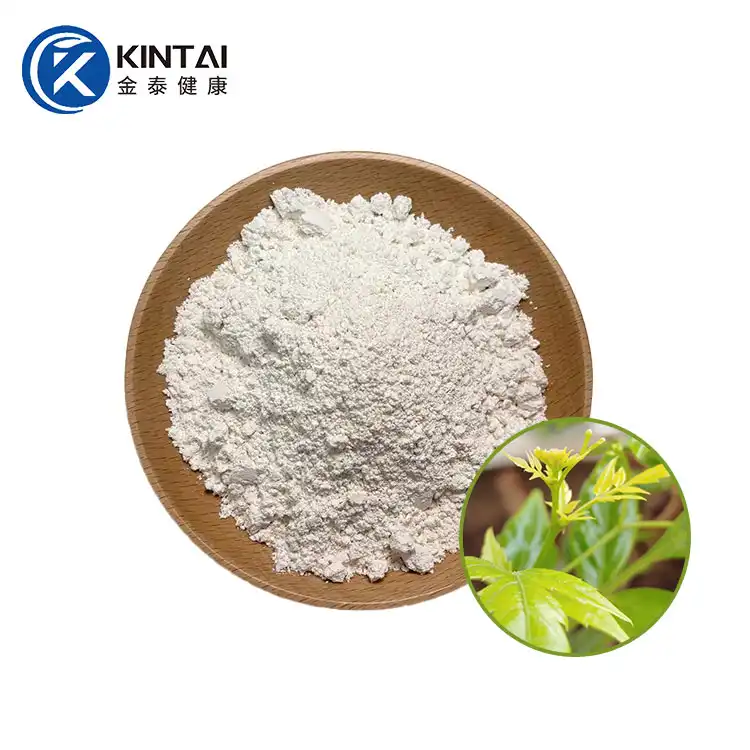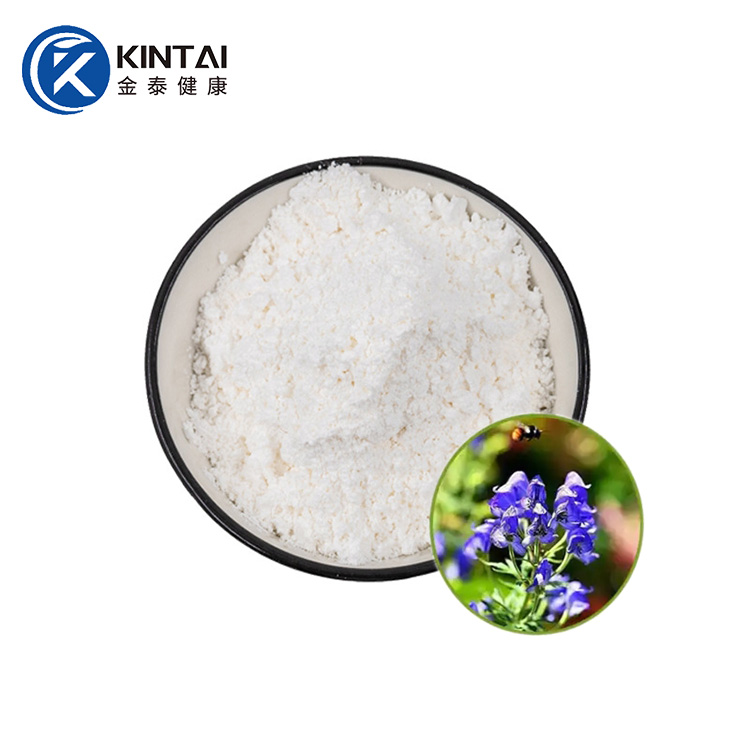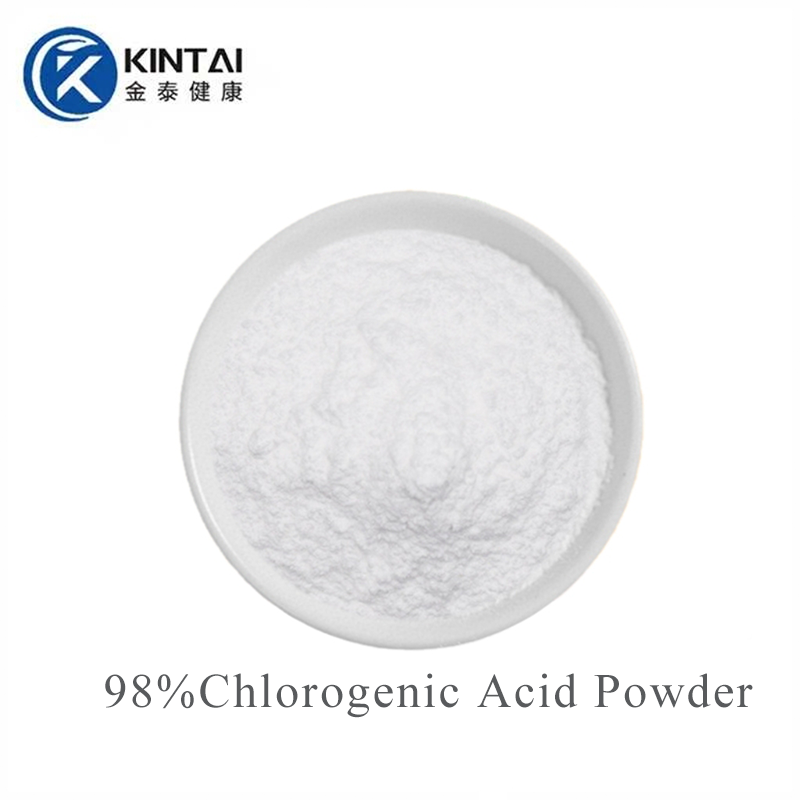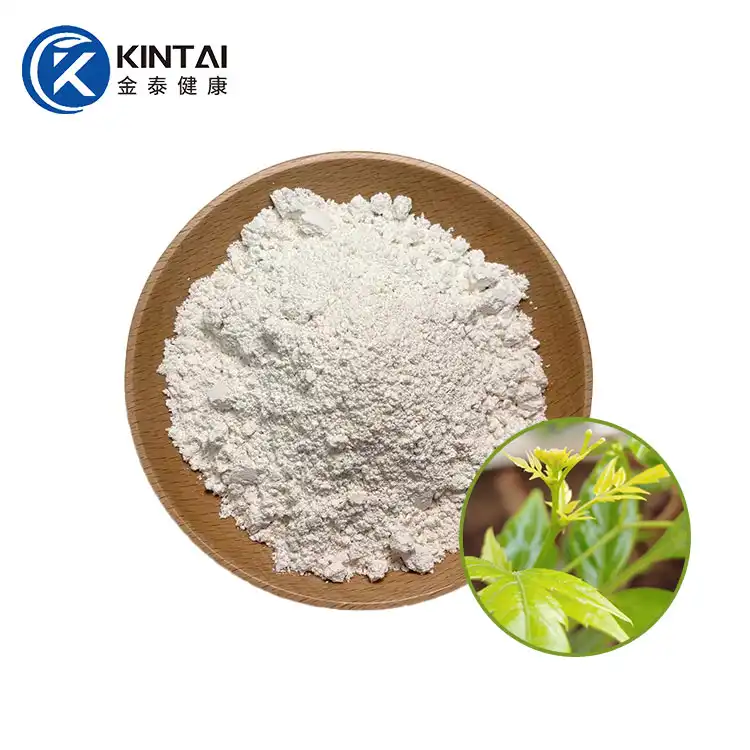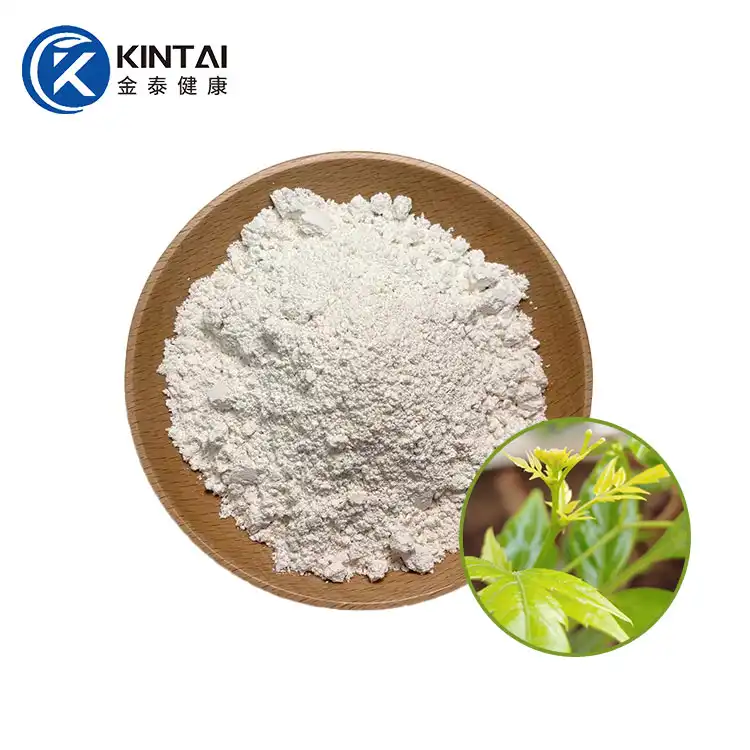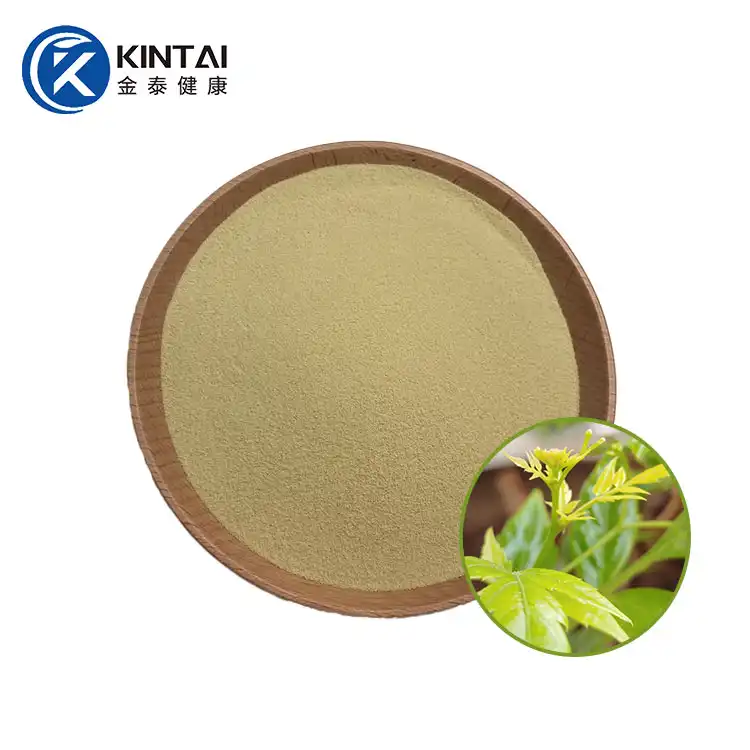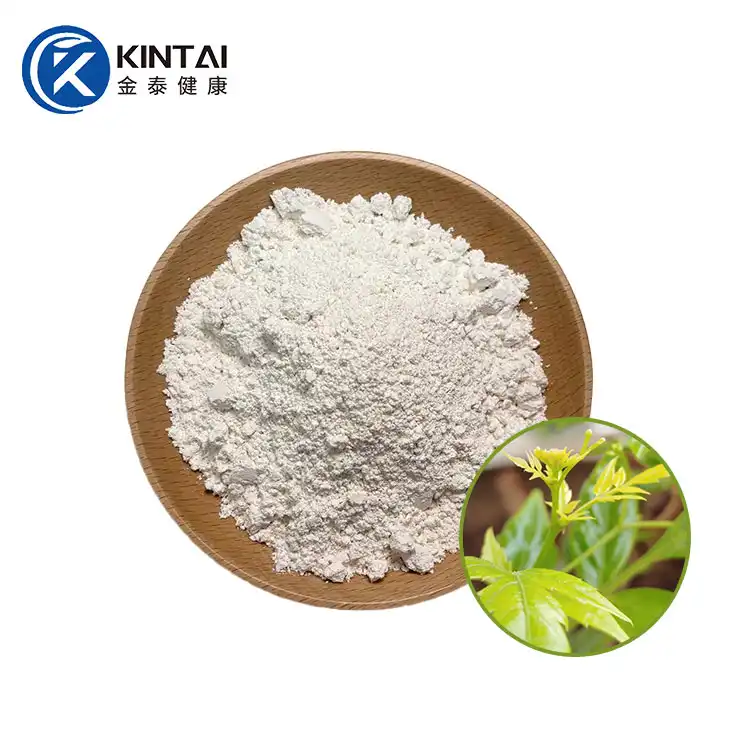Vine Tea Extract
Plant Source: Vine tea
Specification: 98% DHM, 30% Water-soluble DHM powder(Other specifications can be customized)
Test Method: HPLC
CAS Registry No: 27200-12-0
Funcations: Hangover;Anti-oxidation;Liver protection
Appearance: White or light white powder
Certifications: GMP, ISO9001:2015, ISO22000:2018, HACCP, KOSHER and HALAL
MOQ: 1KG;
Sample: Free sample available
Packing:25KG/fiber drum
Delivery Time: Delivery within one day from warehouse
Shelf Life: Two years
KINTAI's Advantage: 100,000 level clean production workshop, Non-additive, Non-GMO, Non-Irradiated/treat by heat only.
- Fast Delievery
- Quality Assurance
- 24/7 Customer Service
Product Introduction
Vine tea Extract Manufacturer&Supplier
The most abundant compound in the Vine Tea Extract is flavonoids, and the flavonoid with the highest content is dihydromyricetin, in addition to myricetin, quercetin, apigenin, etc. Flavonoids are an important basis for the pharmacological effects of vine tea such as anti-inflammatory, antioxidant, and liver protection.

Kintai is a professional manufacturer of Chinese vine tea extract powder. We not only provide high-quality dihydromyricetin powder with a high content of 98%, but also develop 30% water-soluble DHM powder. There are other specifications that can be customized, please feel free to contact us at health@kintaibio.com.
Physical and Chemical Properties of Vine Tea Extract
|
Property |
Description |
|
Common Name |
Vine Tea Extract |
|
Physical Form |
Fine powder, amorphous powder, or solid mass. |
|
Color |
Light yellow, yellowish-brown, to brown. |
|
Odor |
Characteristic, faint, slightly aromatic. |
|
Taste |
Initially slightly sweet, followed by a pronounced and lingering sweet aftertaste. |
|
Solubility |
- Water: Soluble (especially for flavonoid glycosides). |
|
Stability |
- Relatively stable under normal storage conditions. |
|
Chemical Class |
Primarily Flavonoids, specifically Dihydroflavonols. |
|
Molecular Weight (of DMY) |
320.25 g/mol |
|
Melting Point (of DMY) |
Approximately 245 - 250 °C (with decomposition) |
|
Analytical Methods |
- HPLC (High-Performance Liquid Chromatography): Standard method for quantifying DMY content. |
|
Bioactivities |
Antioxidant, anti-inflammatory, hepatoprotective (liver-protecting), antimicrobial, antiviral, antihypertensive, hypoglycemic (blood sugar-lowering), neuroprotective. |
|
Storage Conditions |
Store in a sealed container, in a cool, dry, and dark place. Refrigeration is recommended for long-term storage. |
Sample available! Contact us now>>>
Kintai's Vine Tea Extract Production Process
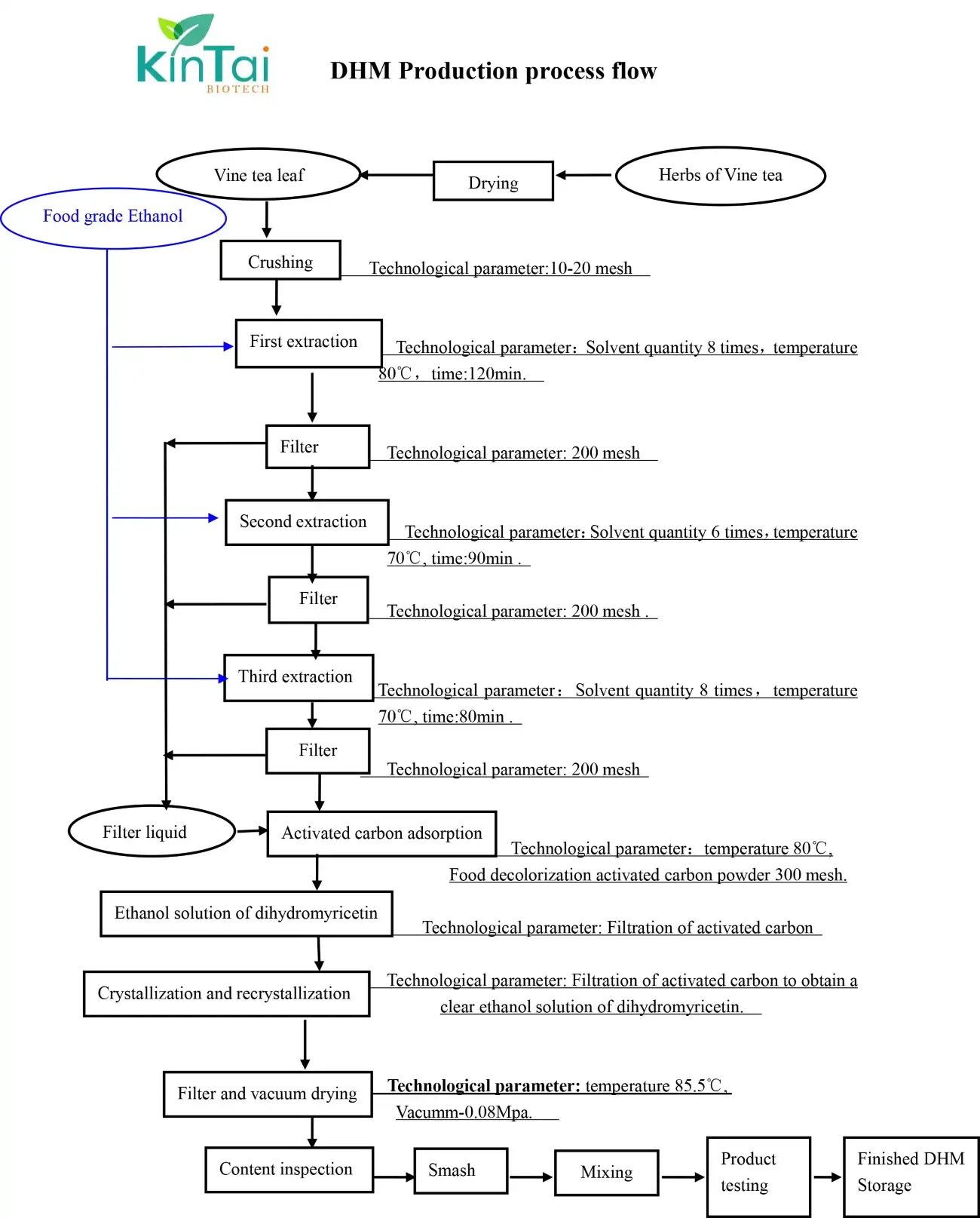
Vine Tea Extract in Livestock and Poultry Breeding
1.Enhance the immune function of livestock and poultry, have a good promoting effect on the health and disease resistance of poultry, and help promote the development of broiler immune organs and the recovery of damaged tissues and organs.
2.Can improve poultry production performance and feed conversion rate. According to reports, adding 0.025% DHM to the diet can significantly increase the daily feed intake of broiler roosters and significantly increase the daily weight gain. And adding DHM to the feed can significantly improve the production performance of Hailan laying hens, significantly increase the egg production rate, and reduce the feed-egg ratio to a certain extent.
3.Adding Vine Tea Extract dihydromyricetin to the diet can improve the quality of chicken. Adding 0.025% dihydromyricetin to the diet can significantly increase the leg muscle rate of broiler chickens. The evisceration rate of broiler chickens with 0.05%, 0.1%, and 0.2% dihydromyricetin is significantly higher than that of the control group, and the meat is more tender and better.
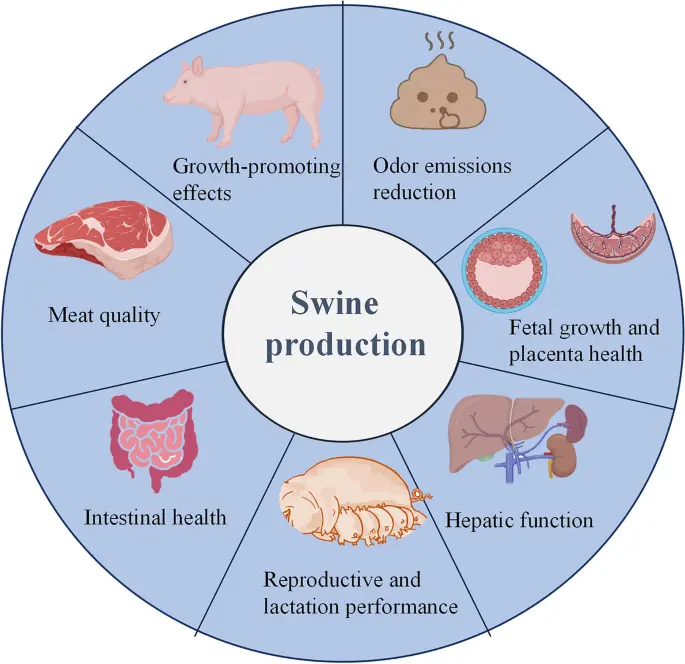
DHM has rich active ingredients and good biological functions, and it has been proven to have obvious clinical effects in pig and chicken production, and has broad application prospects.
Antibacterial effects of Vine Tea Extract
Vine Tea contains a variety of active ingredients, including flavonoids, phenolics, polysaccharides, volatile oils, amino acids, and trace elements. Its primary active ingredient is flavonoids, primarily dihydromyricetin (DMY), which is also the primary antibacterial component of Vine Tea . Flavonoids, the main component of tengcha, are present in high concentrations, reaching 43.40% to 45.52%. In addition to DMY, other flavonoids include myricetin, hesperetin, taxifolin, quercetin, kaempferol, and apigenin. Furthermore, phenolic compounds in Vine Tea include gallic acid, catechin, and epicatechin, and steroidal compounds include oleanolic acid, β-sitosterol, and stigmasterol. DMY is the primary antibacterial component of tengcha. In addition to its antibacterial properties, it also possesses anti-inflammatory, anti-allergic, hypoglycemic, lipid-regulating, antioxidant, and anti-tumor properties, offering broad application prospects. Vine Tea and its compound preparations have diverse ingredients and complex mechanisms of action. Their simple in vitro antibacterial effects cannot be compared with antibiotics, but clinical results have proven that Vine Tea Extract is indeed effective in treating bacterial infections.
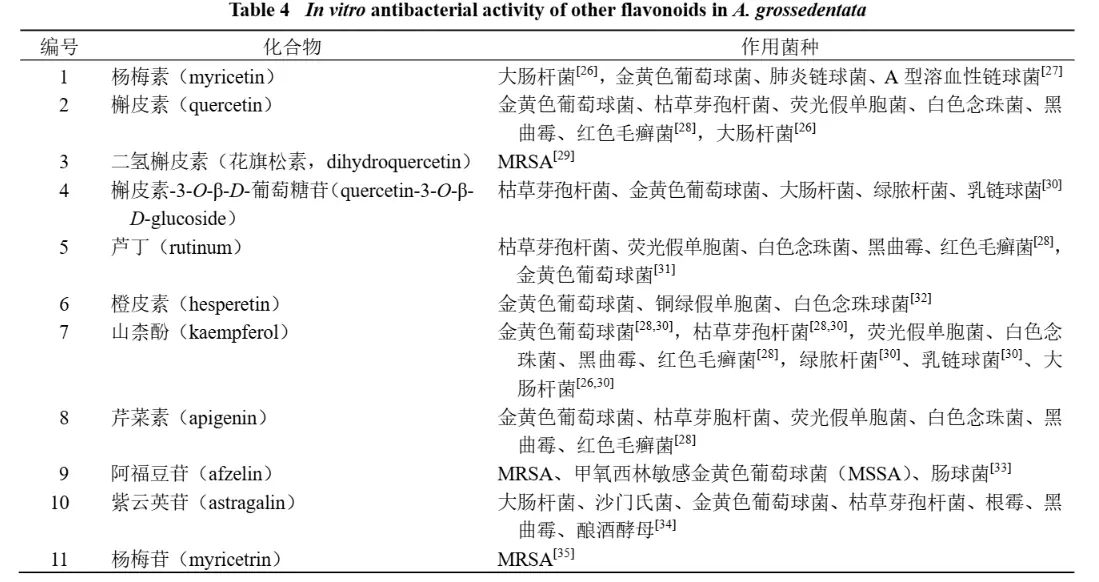
(Reference: Research progress on antibacterial effects of Ampelopsis grossedenta,ZHOU Xi-ya, CHEN Jing, FANG Jian-guo, WANG Wen-qingDepartment of Pharmacy, Tongji Hospital Affiliated to Tongji Medical College, Huazhong University of Science and Technology,Wuhan 430030, China)
Vine Tea Extract Uses
1. Health Food and Health Products
This is the most mature application area. The extract is primarily used as a functional ingredient for liver protection, hangover relief, and immune enhancement. It effectively mitigates chemical liver damage by accelerating ethanol metabolism and inhibiting hepatic lipid peroxidation, making it commonly used in products such as liver-protecting tablets and hangover candies. Its powerful antioxidant capacity also helps scavenge free radicals, delaying aging, and is used in a variety of antioxidant dietary supplements.
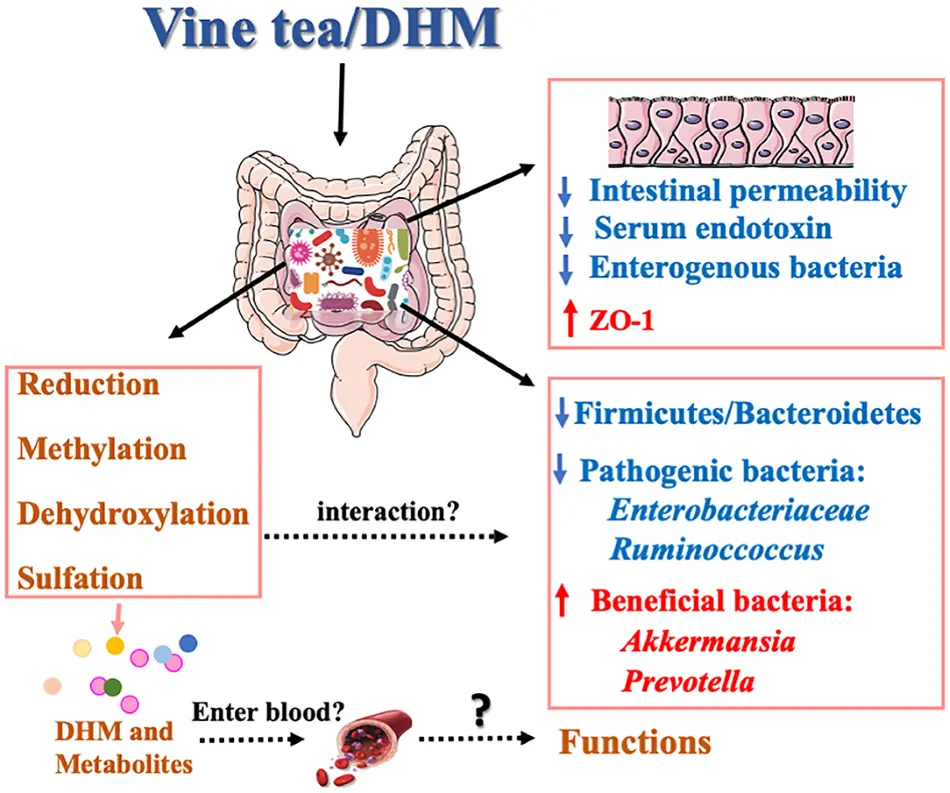
2. Food Industry
It is primarily used as a natural preservative and functional food base. Its broad-spectrum antimicrobial properties effectively inhibit microorganisms in meat and pastries, extending shelf life. It is also used in the development of functional beverages and solid teas, imparting health benefits such as throat-clearing and anti-oxidant properties.
3. Daily Chemicals and Cosmetics
It is used as a natural active ingredient in skincare and oral care products. In skincare, its antioxidant properties help fight aging and wrinkles, while its anti-inflammatory properties are suitable for soothing sensitive and acne-prone skin. In toothpaste and mouthwash, its antimicrobial effects are used to maintain oral health and prevent gingivitis.
4. Agriculture and Animal Husbandry
As a potential green feed additive, amidst the antibiotic ban, it is being studied for its potential use in enhancing livestock immunity and promoting growth. By improving animal intestinal health, it can reduce antibiotic use. Vine Tea Extract antioxidant properties may also help improve meat quality and extend its shelf life.
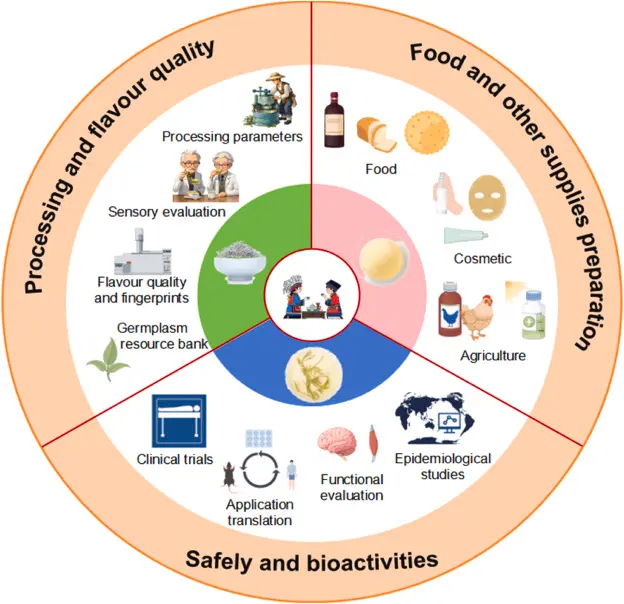
Why Choose KINTAI Vine Tea Extract?
- Premium Raw Material: Our Vine Tea is sourced from the pristine mountainous regions of China, where it grows naturally without pesticides or heavy metals.
- Advanced Extraction Technology: Standardized to ≥98% Dihydromyricetin (DHM) for consistent efficacy.
- Transparent Quality Control: Each batch of products is laboratory verified to ensure purity and the absence of heavy metal, microbial and pesticide pollutant residues.
- Stable Supply Chain: We are a professional plant extract production factory.—no middlemen, competitive pricing.
FAQ
Q1: What are the key active compounds in your extract?
A1: Our extract is standardized to ≥98% DHM (dihydromyricetin), along with flavonoids and polyphenols, ensuring high potency and efficacy.
Q2: Can 98 dihydromyricetin vine tea extract be used commercially?
A2: Yes, our high purity 98% DHM powder is often used in the pharmaceutical industry.
Q3: Is Vine Tea Extract safe? Any side effects?
A3: Generally recognized as safe (GRAS) when used as directed. No reported severe side effects, but consult a doctor if pregnant, nursing, or taking medications.
Q4: Do you provide Certificates of Analysis (COA)?
A4: Yes! Contact us to obtain COA and more product documents!
Our Certifications
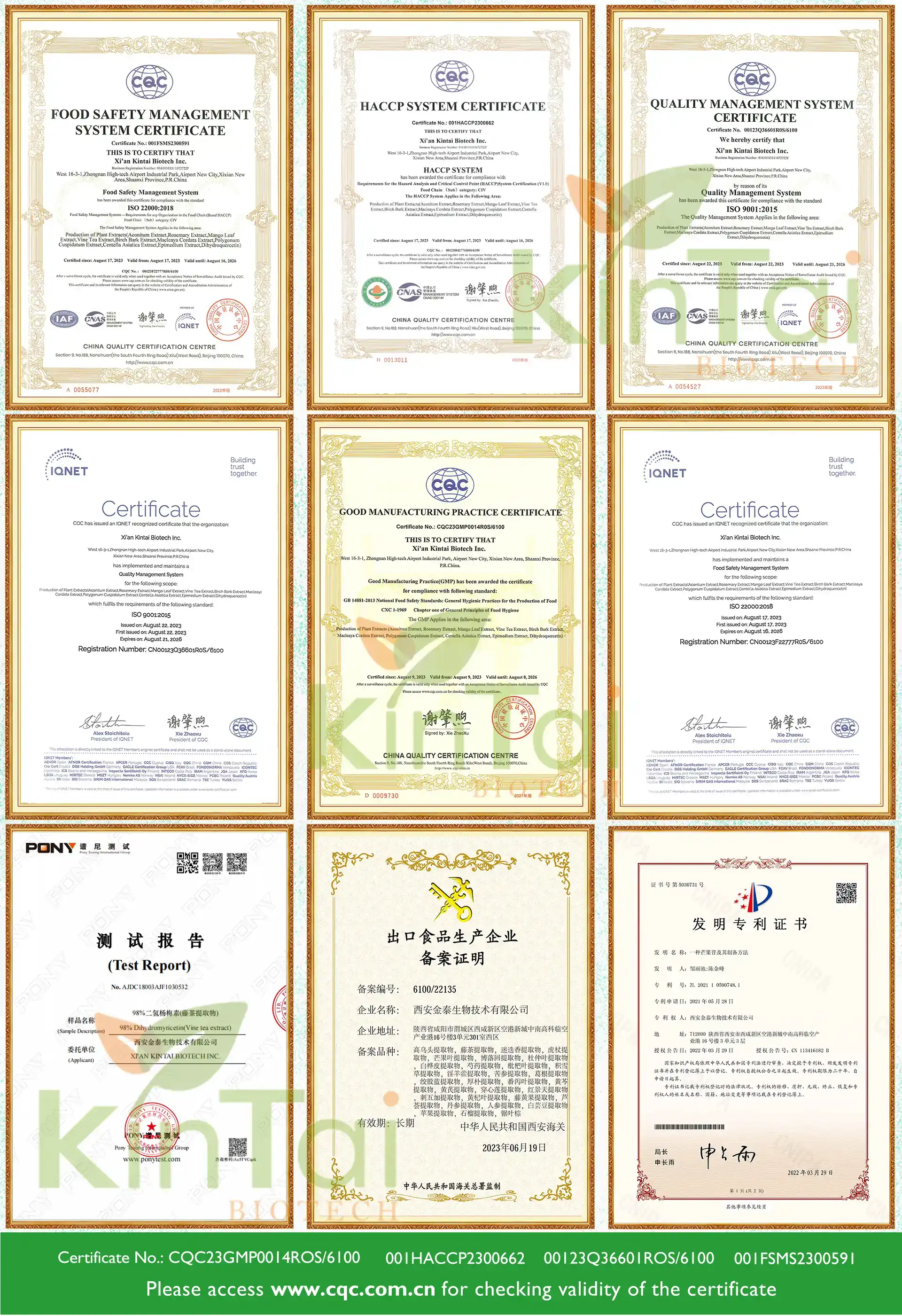
Send Inquiry
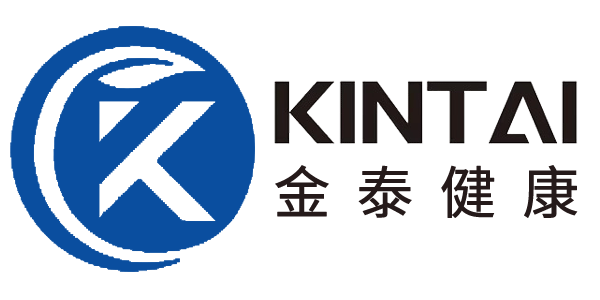
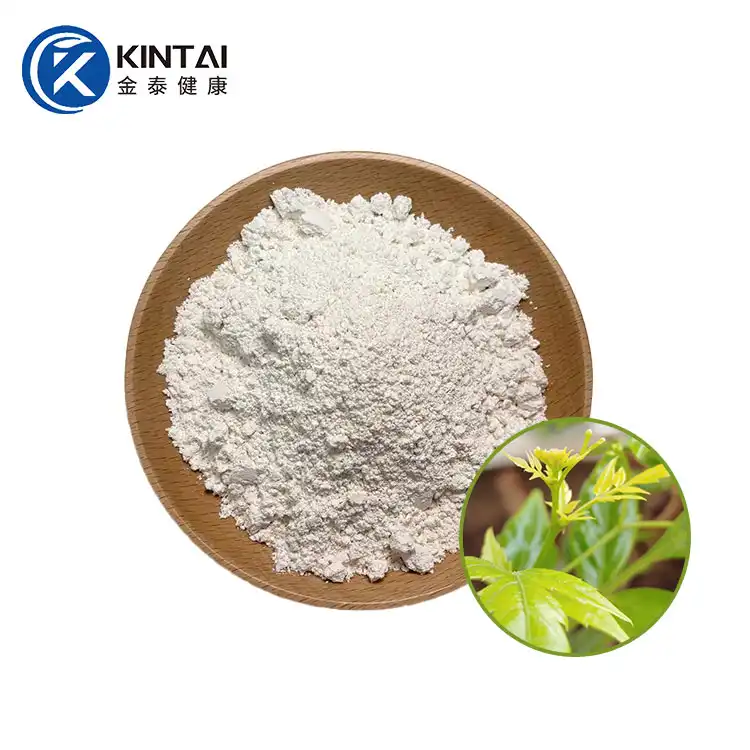
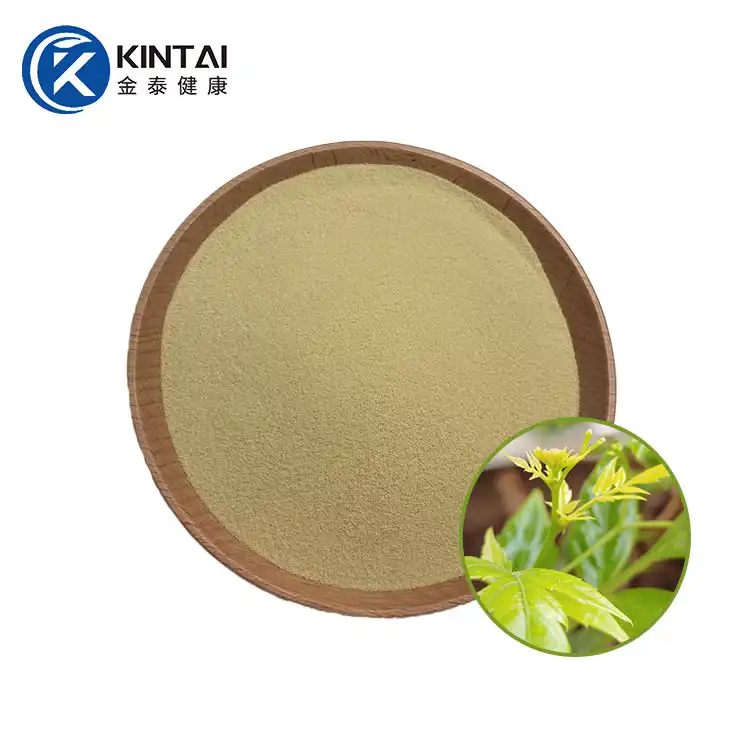
_1760944232152.jpg)
